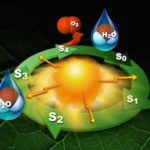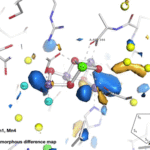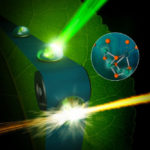A team of scientists, including many in the Molecular Biophysics and Integrated Bioimaging Division, uncovered new details about the reaction that powers photosynthesis. Understanding this reaction could lead to world-changing advances in technology, medicine, or energy––and also gives insight into how the enzyme photosystem II produces the oxygen we breathe. Their latest work was recently published in Nature Communications and two of the authors, Vittal Yachandra and Philipp Simon, spoke with Strategic Communications about that, shooting stuff with lasers, and why they chose this field of research.
Showtime for Photosynthesis
An international team led by researchers in Berkeley Lab’s Molecular Biophysics and Integrated Bioimaging (MBIB) Division has revealed a key step in the molecular mechanism behind the water splitting reaction of photosynthesis. The finding could help inform the design of renewable energy technology.
Scientists Capture Photosynthesis in Unprecedented Detail
Using the SLAC National Accelerator Laboratory’s Linac Coherent Light Source (LCLS) X-ray laser, an international collaboration led by scientists at Berkeley Lab and SLAC captured the all four stable oxidation states of photosystem II— plus two transitional states—at natural temperature and the highest resolution to date.
X-rays Capture Unprecedented Images of Photosynthesis in Action
An international team of scientists is getting closer to discovering how plants split water during photosynthesis and produce nearly all of the oxygen in our atmosphere. Thanks to unprecedented, atomic-scale images of a protein complex found in plants, algae, and cyanobacteria captured by ultrafast X-ray lasers, researchers conducted atomic-level experiments to help delineate the mechanism of this system that also yields the protons and electrons used to reduce carbon dioxide to carbohydrates later in the photosynthesis cycle. The effort to uncover the secrets of this protein complex, photosystem II, was led by Vittal Yachandra and Junko Yano in the Molecular Biophysics & Integrated Bioimaging (MBIB) Division and the team’s findings were published this week in Nature.
Was this page useful?







